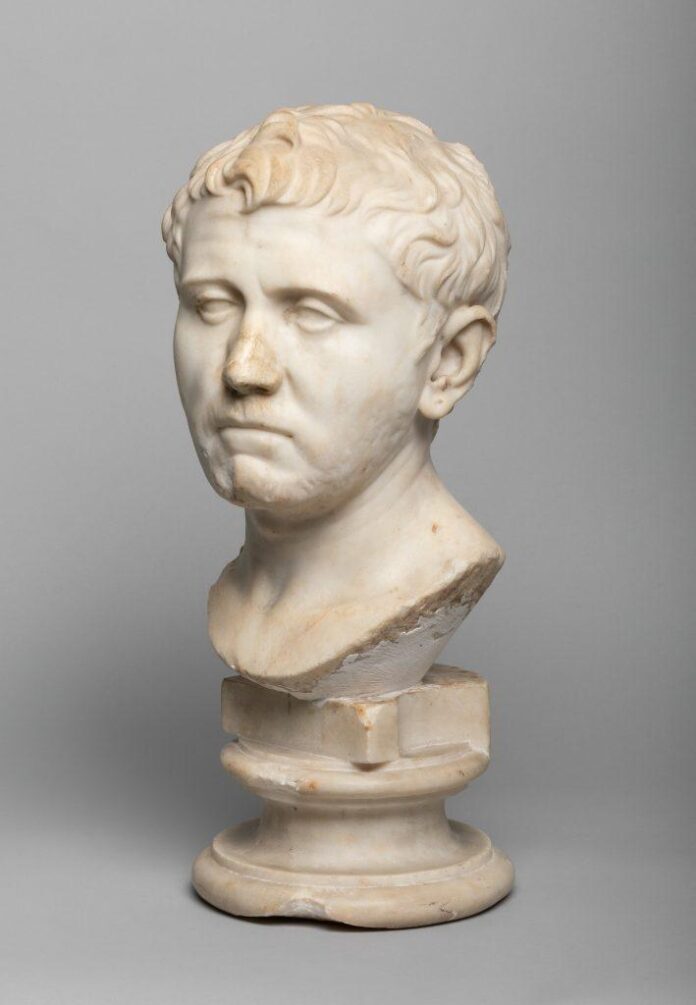Five years ago, an eagle-eyed thrift store owner named Laura Young picked up what turned out to be an ancient Roman bust at a Goodwill in Austin, Texas. Now the sculpture is headed back to Germany, from where it last came.
The marble bust is believed to have been created in the late 1st century B.C.E. or early 1st century C.E. Though Italian in origin, the last-known record of the piece traces it back to the Pompejanum, a full-scale replica of a Pompeii villa commissioned in the 1840s by King Ludwig I of Bavaria.
Located in the German city Aschaffenburg, the Pompejanum faced heavy bombing during World War II. The site was restored and reopened in the 1960s, but by that time, or perhaps shortly after, the bust had disappeared. Some suspect it may have been taken by a U.S. soldier stationed in the area.
For the last year, the sculpture has been on view at the San Antonio Museum of Art, which has worked with Young and the Bavarian Administration of State-Owned Palaces to return the piece.

Portrait of a man, Roman on view at the San Antonio Museum of Art. Courtesy of SAMA.
The bust will be removed from display on May 21, after which time it will be repatriated to Germany. “Upon its return, the portrait will either go back on display in its original location at the Pompejanum in Aschaffenburg, or at the Munich Glyptothek with the rest of Ludwig I’s collection,” a spokesperson for the museum told Artnet News. The representative declined to comment when asked whether SAMA or the Bavarian Administration of State-Owned Palaces will pay for the sculpture’s shipping and insurance.
“It’s a great story whose plot includes the World War II era, international diplomacy, art of the ancient Mediterranean, thrift shop sleuthing, historic Bavarian royalty, and the thoughtful stewardship of those who care for and preserve the arts, whether as individuals or institutions,” said Emily Ballew Neff, SAMA’s director, in a statement last year.
She called the museum’s work with the Bavarian Administration of State-Owned Palaces “a wonderful example of international cooperation. This is another critical way in which our art museums participate in diplomacy around the globe.”

Laura Young with the portrait of a man. Photo courtesy of Laura Young.
Young, who operates a company called Temple of Vintage, paid just $34.99 for the bust at Goodwill, but even then, she suspected it may be worth much more. That inkling led her to get in touch with University of Texas scholars and auction house experts. After four years, Young finally confirmed the artwork to be authentic.
By that point, though, she knew she had to give it up.
“My husband and I were on a road trip when I got an email from Bonhams confirming the head was indeed ancient Roman, but without provenance they could be of no further assistance. Soon after that, Sotheby’s got in touch,” Young recalled. “There were a few months of intense excitement after that, but it was bittersweet since I knew I couldn’t keep or sell the [bust].”
Who exactly the sculpture is meant to depict remains unclear. Experts have suggested that the visage belongs to Sextus Pompey, a military leader who fought and lost to Julius Caesar before being executed. Others believe the bust was based on the Roman politician Nero Claudius Drusus Germanicus.
“Either way, I’m glad I got to be a small part of [the sculpture’s] long and complicated history,” Young continued, “and he looked great in the house while I had him.”

























